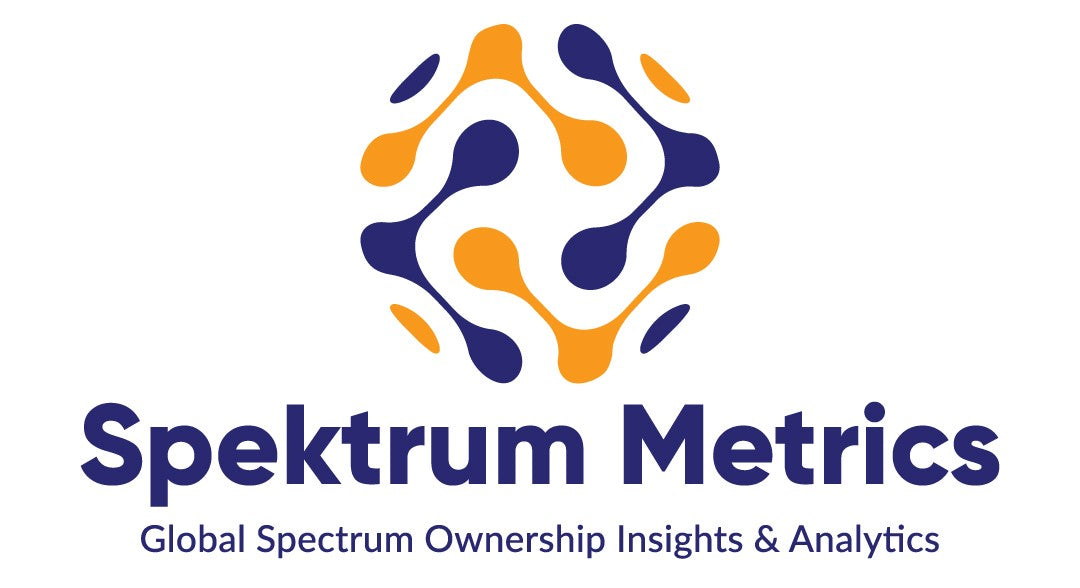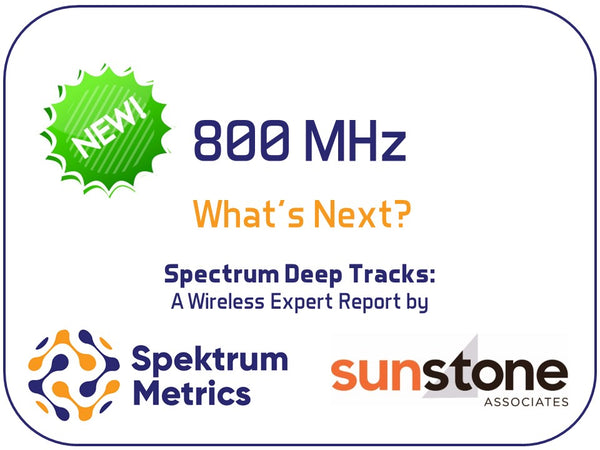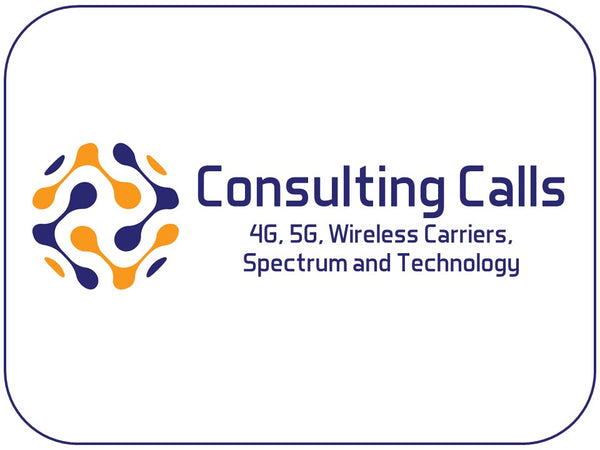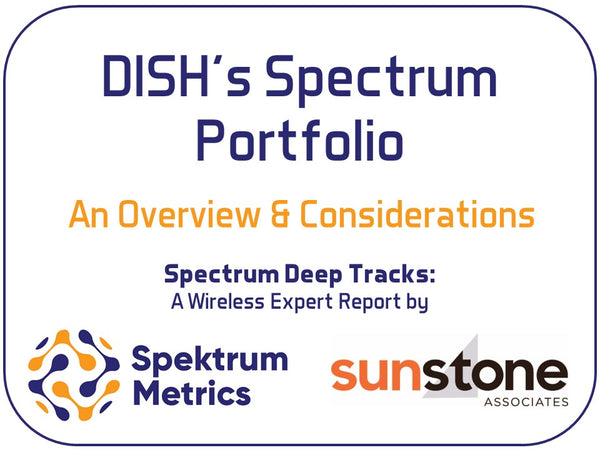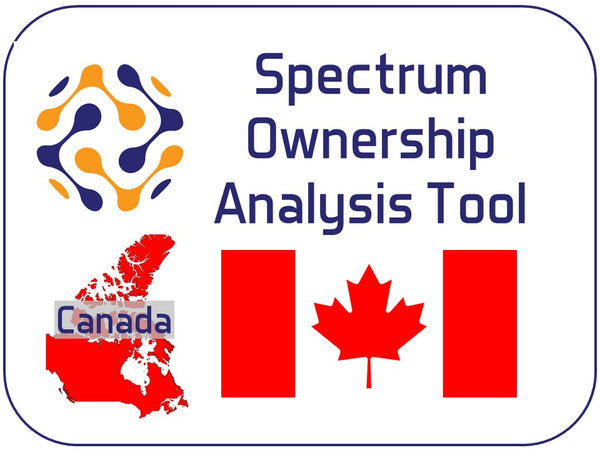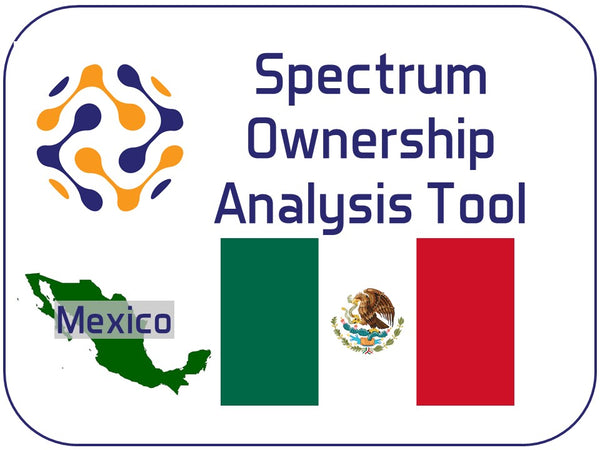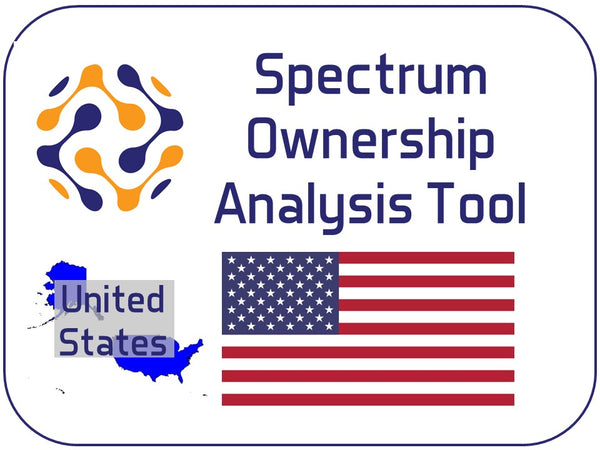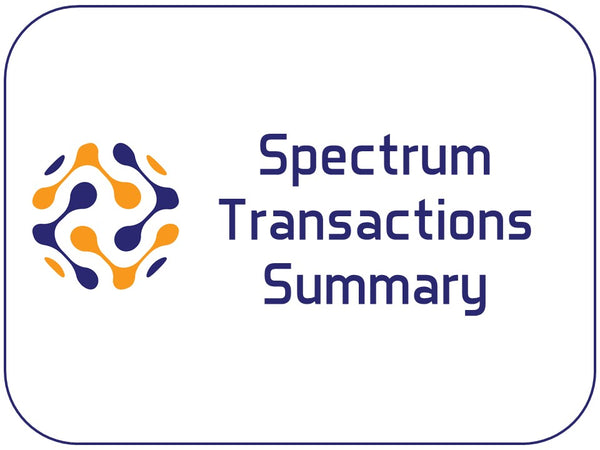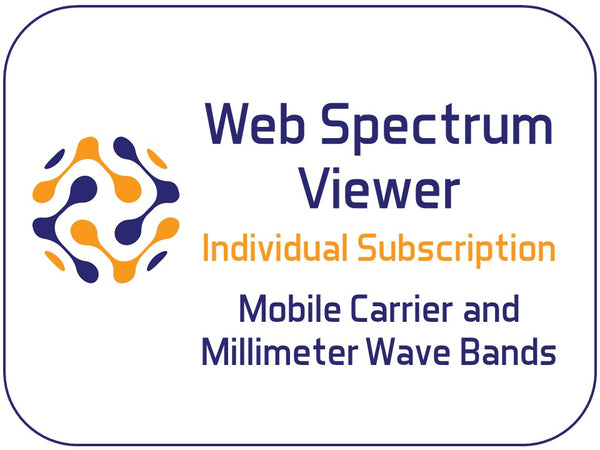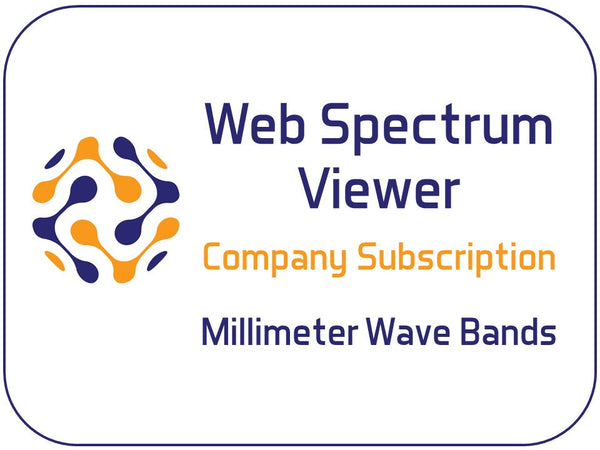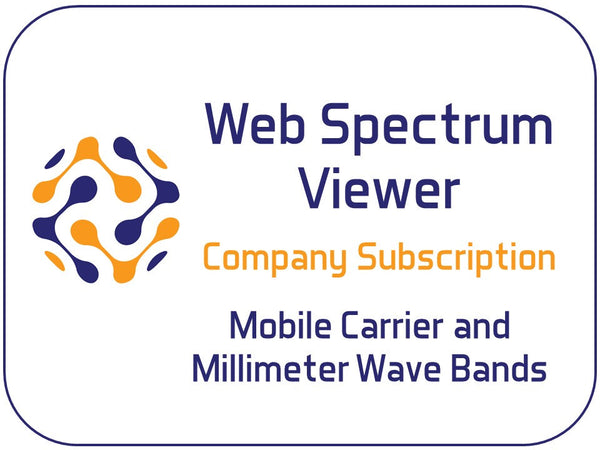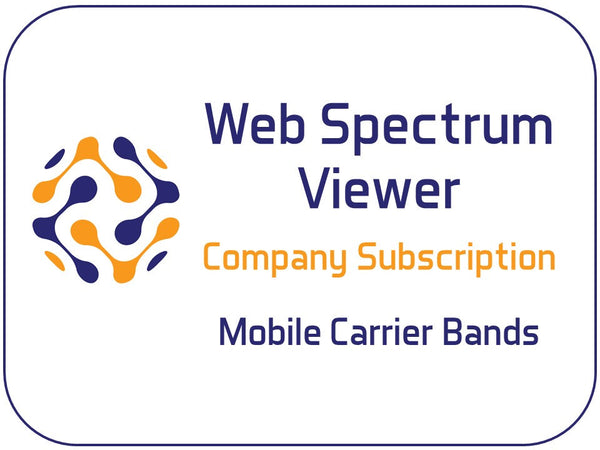EBS Whitespace Auction Opportunities Tool January 24, 2021 16:03
What is EBS Spectrum?
Background
Educational Broadband Service (EBS) is part of the US 2.5GHz spectrum allocation along with the Broadband Radio Service (BRS). These two types of spectrum fall between 2495MHz and 2690MHz on the 2.5GHz band allocation.

EBS spectrum has traditionally been owned by educators, including colleges, universities, K-12 school districts, and para-church organizations. Originally, the EBS and BRS spectrum licensees were assigned 35-mile licensing circles around a set of coordinates representing the original broadcasting site. In 2009, the Federal Communications Commission (FCC) held an auction for the areas of unlicensed BRS spectrum (all BRS spectrum outside of the licensed circles). However, unlicensed EBS spectrum has never been made available to the public, and thus remains under FCC control. This unlicensed spectrum is precisely what will be auctioned off in early 2021.
Given that the EBS Whitespace Auction is focused on the unlicensed area surrounding existing licenses, a basic understanding of how current EBS license areas are structured is necessary to evaluate the available whitespace areas.
Existing EBS licenses are organized into what are referred to as geographic service areas — or GSAs. According to the FCC’s licensing description for BRS and EBS spectrum, “the GSA of a P35 license (which can be either BRS or EBS) generally consists of the station’s 35-mile radius around the protected service area coordinates. In those instances where two co-channel stations have overlapping protected GSAs, the GSA of each license may be reduced due to the ‘splitting the football’ approach used to divide the overlap area between the licensees.” The FCC’s Universal Licensing System (ULS) database does not reflect changes made to the GSAs based on overlapping service areas.
In developing our EBS Whitespace Auction Opportunities Tool, we have generated geographic license areas for every existing license across all EBS and BRS channels. While there are other companies that may make available their interpretation of each licensee’s GSA, our license areas take into account many of the nuanced licensing details that are easy to overlook. Our licensing expertise ties back to our president’s time spent at Clearwire as their Director of Spectrum Operations, where he developed a profound understanding of EBS/BRS licensing. This experience has contributed to what we believe is the most accurate representation for all of the EBS/BRS license areas. No one has attempted to analyze each county’s whitespace based upon these license areas, making the resulting data, available in our EBS Whitespace Auction Opportunities Tool, a crucial part of your Whitespace Auction strategy which is not available from any other source.
Our license areas account for:
- Original P35 licenses
- Overlapping P35 licenses with changes based on football splits
- Licenses filed after original GSAs were generated
- Removal of GSAs for canceled licenses

Auction Channels & Sub-Channels
For the EBS Whitespace Auction, the FCC created individual auction channels from the EBS channels illustrated previously. The original sub-channels have been allocated to form the three distinct auction channels.

Each of the auction channels is a different size in terms of bandwidth. Below are the sizes of each auction channel, measured in MHz:
- Channel 1: 49.5 MHz
- Channel 2: 50.5 MHz
- Channel 3: 1 MHz & 16.5 MHz
The EBS Whitespace Auction Opportunities Tool
Introduction
The EBS Whitespace Auction Opportunities Tool is an Excel-based product which provides insights into the available 2.5GHz unlicensed spectrum for each of the three EBS auction channels. This tool will allow all interested parties — including wireless carriers, telephone companies, internet service providers, and investors — to determine the amount of available spectrum that can be licensed in a county.
The Auction Opportunities Tool is designed to show the number of people that can be served within the whitespace in each auction channel at a county level.
The composite view of all US counties provides insights into the areas where spectrum is available and a larger picture of the overall size of the EBS Whitespace Auction. The primary tools available within the Auction Opportunities Tool are:
- Population View
- Population Percentage View
- Whitespace Area Mapping
Population & Population Percentage Views
What are MHz-POPs?
When looking at the geographic whitespace in a county, there is the potential for each sub-channel’s unlicensed areas to look different. In the EBS Auction Opportunities Tool, we have summarized the amount of people that fall into the whitespace areas for each county. The total MHz-POPs available in each auction channel has been calculated accordingly.
MHz-POPs is a measurement of how much spectrum is available across a market area, typically defined by its population. For EBS spectrum, MHz-POPs are calculated by taking the population available in each sub-channel times the MHz bandwidth of that channel. Since cell phone service is a revenue opportunity tied back to individual consumers, MHz-POPs is a measurement that allows auction participants to forecast the total opportunity within an area of whitespace in a county, therefore determining the general value of the spectrum area.



For example, for two counties in West Virginia, the whitespace area matches the county boundary for the entirety of EBS Auction Channel 1 (figures 7 & 8). This is clearly demonstrated using Population Percentage View (figure 9), which shows that 100% of the total county population falls in the whitespace area for each of the sub-channels that make up EBS Auction Channel 1. To make this more apparent, we employ a “heat chart” format where channels with lower available population% are indicated in red, while high available population% are green. Accordingly, Kanawha and Putnam counties are both highlighted in green across Auction Channel 1. The implication of this data is that the available whitespace population in these counties is equal to the county population and the winning bidder will have access to the entire EBS Auction Channel 1 (49.5 MHz) over the entire county population.
The exact number of people that channel 1 would be able to reach, if licensed, can be evaluated using Population View, which shows the actual whitespace population for each county, along with the total MHz-POPs available for EBS Auction Channel 1 (figure 10). In Kanawha County, the total population is 193,063 x 49.5MHz (channel 1 width), resulting in 9,556,619 MHz-POPs.
In some counties, the unlicensed area will be different for several of the sub-channels. In Douglas County, Nevada, the amount of available whitespace for Auction Channel 1 ranges from 4% (red) to 93% (green) of the total county population. Accordingly, the winning bidder for Auction Channel 1 in Douglas County could use the 5.5MHz B2 channel to reach 93% of the county population with a wireless signal.

In Population View, the raw population counts in each sub-channel’s whitespace area are shown, along with the total MHz-POPs for the entire auction channel. Looking at the B2 sub-channel in Douglas County, one is able to determine that over 43,000 people could be served with a 5.5MHz wireless signal on this sub-channel.

Whitespace Area Mapping
To accurately represent whitespace areas geographically at a county-by-county level, we have added an EBS Auction section to our Web Spectrum Viewer tool. In this section, you will see a similar population view and population percentage view as the Excel tool. In the web view, the user has the ability to select individual sub-channels by clicking the corresponding cells. This will reveal the whitespace area for that specific sub-channel represented visually. Here, a user can gain important insight to more accurately evaluate the available whitespace in that county. Cities, roads, and other landmarks are clearly identified on our Whitespace Area Mapping tool, making it easy to determine whether or not they fall within the available unlicensed areas.


Additional Mapping Files
In addition to geographic mapping through our Web Spectrum Viewer, we are also providing MapInfo TAB files and Google Earth KMZ files as part of each one-time subscription. This would allow the user to utilize these mapping layers in conjunction with their internal infrastructure data.
Tribal Land Licenses
Before the EBS Whitespace Auction goes live, first priority for this spectrum has gone to Native American Tribes to access the whitespace spectrum overlapping with their tribal lands. Each tribe is required to submit an official FCC application to acquire this spectrum, and new Tribal Land licenses are being granted periodically. The information regarding individual Tribal Land licenses will be included in our Whitespace Auction Opportunities Tool. However, as this process is still ongoing, these newly licensed tribal areas are not yet removed from the overall whitespace area on our tool. Once all tribal licenses are finalized by the FCC, our geographic files and our Whitespace Population tools will be updated and made available to all Whitespace Tool users.
We will provide the tribal lands overlay (see below) as new applications are finalized by the FCC, so the effect of the tribal licenses can be predicted as things progress.

Purchasing
The EBS Whitespace Opportunities Tool is available for purchase in two different versions: a national version with all fifty states and US territories, or a specific state-by-state version. In the state-by-state version, you will have the ability to specify as many states as you would like. On our website, simply select the State version of this product, then specify the number of states you’d like to purchase in the quantity field provided. On your way to check out, you will be given the option to “add special instructions.” In the corresponding text box, indicate exactly which states you want included in your one-time subscription.

The EBS Whitespace Opportunities Tool is delivered by download from a cloud service. A link for this download will be provided after your payment is confirmed. Typically you will have access to the data within the same business day of your payment being processed.
All purchases are corporate subscriptions, which allow any employee within the same email domain to utilize the data and request access to the Web Spectrum Viewer.
To schedule a video demonstration, email info@allnetinsights.com or call (425) 522-2142.
Pricing

Purchases can be made through our website or by emailing us at info@allnetinsights.com.
